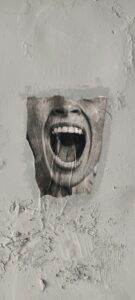
Kidney stones. They can be as painful as childbirth. Maybe more.
It takes time before you realize that your kidneys may be blocked with sediments, and by the time that you do realize it, it’s typically too late to escape the trauma drama.
Kidney pain can go in-and-out when the stones move around in your kidneys, and the pain may actually pass after a few days.
This lack of pain may mean that the stone has passed – literally.
The key point to remember if this happens to you is that if one stoned formed, another one may form again because your body’s environment is probably out of balance. So, the kidneys may get blocked again, and if the stones get larger in size, or deposit in a spot where the stone can’t excrete, your kidneys can shut down.
That’s when you end up in the ER giving birth to tiny chunks of calcified sediments.
And that can hurt.
A lot !
This is when you ask yourself WHY are kidney stones forming, and WHAT can you do to change this so it does NOT happen again?
Your Kidneys

Kidneys are amazing. Your kidneys are fist-sized, bean-shaped organs near the middle of the back with one on either side of the spine just below the rib cage. Your kidneys filter the blood collecting about two quarts of waste products and excess water each day (your urine).
Normally, this flows out through tubes, called ureters, that connect each kidney to your bladder, and then on out through a fairly short tube that goes from the bladder to the outside of your body (known as the urethra).
Stones
There are many reasons why people get kidney stones, but primarily, stones form when too little water is available to dilute the body’s waste.
Like a dried stream bed in an outside environment, this occurs when sediments stay in the kidneys and form solid pieces that can continue to grow as additional sediments build up.
Dried stream beds are highly alkaline, so it’s important to check your pH to see if it’s above 7.0, which may be too alkaline for you.
And this environment forms sediments, or a kidney stone. Or two. Or three.
Like pebbles on a beach, kidney stones can be smooth or lumpy, or jagged and sharp. Most are small like a grain of sand or rice, but some can grow larger to be the size of a pearl, or even as large as a ping-pong ball.
Ouch!
Prevention
In Part 2, I will share ways to prevent sediments from depositing in your kidneys, and ways to maintain a healthy body pH and a balanced environment. There are tricks that you can use daily to avoid ever giving birth to a stone, and ways to keep your kidneys clean.
To Your Kidney Health !!!
You have our permission to reprint this article if you attribute us with a live back-link to this article. https://janethull.com/healthynews/.
Disclaimer: This article is for informational purposes only, and is educational in nature. The FDA may not have evaluated some of the statements. This article is not intended to diagnose, treat, cure, or prevent any disease. Please discuss with your own, qualified health care provider before adding supplements or making any changes to your dietary program.